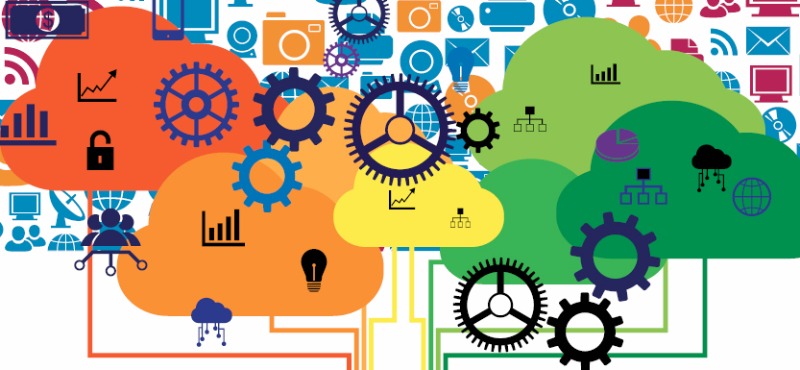Changes are coming to the human resources department.
For one thing, companies are dropping the “human resources” in favor of “people management” or “people operations” to reflect the times and follow in the footsteps of Google and other progressive employers. Companies are boosting people management leaders to C-level positions to recognize the more strategic role they play in an information economy as well as the cutthroat nature of competition for top talent in some industries. Among these executives’ top priorities is figuring out how to find, hire, and engage with younger employees who now make up the largest collection of the U.S. workforce.
At the same time, organizations are adapting to the changing nature of work. With more people working flexible hours, remotely or as independent contractors, managers are adopting different measures to gauge performance and productivity. It’s also got organizations grappling with how to use contingent workers—a population that’s forecast to increase—without treating them like employees and running into legal issues.
Organizations also are using more data analytics to inform workforce decisions on everything from identifying the most promising job candidates to allocating shift workers. The activity comes as the technology companies used to hire, track, pay, and evaluate workers moves to the cloud, which can be less costly and offers more user-friendly interfaces, mobile apps, and other upgrades.
Put it together, and it’s nothing short of a revolution in people management. “Work is changing, but the way we work has been stuck in the industrial age,” Derek Irvine, an employee recognition expert and executive vice president at HR software provider Globoforce told attendees at an October HR conference.
Enlightened companies see HR as “a tight operational part of the business,” said Jason Ferrara, chief marketing officer at predictive analytics firm OutMatch. “They realize that people are driving the company” and elevating the function as a result.
To be sure, a Donald Trump White House and Republican-led Congress could bring about additional changes to the Affordable Care Act, minimum wage, and other labor laws enacted by a worker-friendly Obama administration. Still, even a new president with a radically different agenda than what business leaders have dealt with over the past eight years won’t stop the trends and innovations reshaping how companies manage their labor force.
Millennials’ Preferences Change Office Norms
Many people management changes are being driven by the youngest generation in the workplace. Already the largest segment of the U.S. workforce, the cohort of workers ages 18 to 34 is expected to represent 34 percent of the country’s labor by 2024, according to the Bureau of Labor Statistics.
Millennials are job hoppers, with 21 percent changing employers within the past 12 months and 60 percent open to a different job opportunity, according to a May Gallup poll. They’re glued to their phones as well as Facebook, Instagram, Snapchat, and other social accounts. They place higher value on jobs with flexible schedules that make it easier to balance work with the rest of their lives. They “don’t do as they’re told, they do what they think is best,” Josh Bersin, a human resources analyst and principal at Bersin by Deloitte, told attendees at the HR Technology Conference in October. “One of the most innovative things Google did was give employees 20 percent time to work on their own projects. They institutionalized the idea that companies can trust their employees and give them time to innovate.”
Companies are accommodating younger employees’ preferences by revamping how they find, hire, manage, and review people. Video job interviews are becoming the norm, at least for initial screening purposes. Recruiters are starting to use text messages to connect with job seekers. Recruiters and HR staff are also using “chat bots,” computer programs that carry on a conversation, to answer common questions about job interviews, employee benefits, and more. Social media is the new mainstay for recruiting and office communications, so much so that Microsoft paid $26.2 billion for LinkedIn in 2016, which the tech giant is starting to integrate into its existing Office software, and Facebook launched a rival business network called Workplace by Facebook.
No More Annual Reviews
To appeal to the instant-feedback generation, companies such as Accenture, GE, Deloitte, and Adobe have replaced formal annual performance reviews with more frequent check-ins between managers and direct reports. Accenture abandoned annual reviews in part to appease millennials, which make up 72 percent of its 375,000-person workforce. Another impetus was the two million hours a year the multinational management consulting firm devoted to annual reviews, only 25 percent of which was spent actually talking to employees. “The amount of energy and time that went into it was not adding value to our people,” said Ellyn Shook, Accenture’s chief leadership and human resources officer.
Starting in 2015, Accenture replaced annual reviews with an internally developed app called Accenture People that employees use to set personal and team goals and request feedback on how they’re doing as often as they want. After the switch, “employee mood skyrocketed, and it’s still very high. People feel very excited about how forward-looking it is,” Shook said.
To provide better work-life balance, companies are allowing more employees to work flexible schedules or from remote locations, such as home offices. Some businesses operate as near virtual organizations with minimal staff at a physical headquarters. Vyral Marketing5 is one. Frank Klesitz, chief executive of the 60-person social media and video marketing services firm, lives in San Diego and works out of an office there along with a handful of employees. The bulk of the firm’s staff is based in the company’s Omaha headquarters. Another 25 percent are independent contractors who work from anywhere. Klesitz uses Google Hangouts and Slack to keep staff feeling connected and polls people weekly to see how they’re feeling.
Companies are moving beyond traditional employee benefits and perks to address other aspects of workers’ well-being and to help them be productive, engaged, and less likely to split for a new job. New perks go beyond nap rooms, office slides, foosball tables, and the free food and drinks that have become standard at Silicon Valley startups. They also include employee fitness and wellness programs and financial planning classes to help workers manage their 401(k) accounts and save for their kids’ college expenses.
People Management Moves to the Cloud
As companies change how they find and manage people, they’re adopting technology that accomplishes those tasks faster, more efficiently, or for less money. Email and desktop software is out, traded in for internal networks such as Slack and web-based platforms like Google Docs that allow for instant communication and better collaboration between teams and departments.
One of the biggest transformations companies are making is to cloud-based services and mobile apps. Today, businesses can choose from hundreds of options for cloud-based people management tech, including for payroll and benefits but also to track job applicants, onboard new hires, maintain personnel records, schedule shifts, track time and attendance, ask people how they’re feeling about work, and collect data for workforce planning purposes.
For the first time ever, more than half of U.S. companies are running payroll on a cloud-based service, according to a Sierra-Cedar HR tech report. Of the 1,500 U.S. companies surveyed, 40 percent are planning a major workplace technology initiative in 2017, many of which involve moving to cloud-based services.
People management services from vendors such as Oracle, SAP, Workday, ADP, Kronos, and an ever-growing number of startups look nothing like previous generations of HR software. They’re designed so everyone in an organization can use them, not just the HR department. The movement toward “employee self-service” means people can log on to a central HR portal to update their own personnel files, request time off, or make changes to their employer-sponsored health insurance during open enrollment season.
“Email and desktop software is out, traded in for internal networks such as slack.”
As people spend more time on their phones, companies are adding more functions to mobile-friendly websites or apps that perform some or all the functions of their web-based counterparts. Servers and cooks at Hard Rock and other restaurants that use software from HotSchedules, for example, can download iPhone or Android apps to look up their schedule, get rid of a shift they can’t work, send a message to their boss, or read group messages.
People management lagged other business functions in incorporating data analytics for planning and other purposes. Today, though, a growing number of people management platforms integrate workforce analytics into their products. As a result, companies can do things like review how many people worked on Black Friday the previous year, what sales were, and use that to calculate how many people to put on the schedule the following year to maximize profits.
The latest wave of people management technology incorporates artificial intelligence and machine learning, giving managers the ability to predict which job candidates might be the best fit, which employees might make the best managers based on their performance, and which are at greatest risk of leaving. Zeeto, a San Diego startup that sells website traffic monetization technology, uses predictive analytics based recruiting software to identify job candidates, including people who aren’t looking for work but might be interested in switching jobs under the right circumstances. The software, from Entelo, analyzes data on 275 million job candidates compiled from dozens of online sources and then uses software algorithms to identify the best matches, including which ones are more likely to take a new job in the following 90 days. Though the software is expensive, it’s not as much as hiring an outside recruiter to do the work. “One new hire pays for itself,” said Ashley Plaetzer, Zeeto’s director of talent.
“Experts believe predictive analytics can help organizations remove biases from the hiring process.”
Workplace experts believe predictive analytics can help organizations remove biases from the hiring process and help companies’ efforts to cultivate more diverse, inclusive workforces. “I don’t think models can be perfectly bias-free, but they are better than humans,” said Don Weinstein, chief strategy officer at ADP.
Gig Economy and the Rise of Contingent Labor
Beyond changing demographics and workplace technology, the relationship between companies and the people who make, sell, promote, and provide customer service for their products is in flux, with organizations relying on unprecedented levels of contract or contingent labor.
Companies that cut staff during the recession used contingent workers to fill in the gaps because it was a fixed cost that was easier to control. But as the economy improved, Corporate America’s dependence on temporary workers provided by staffing agencies, independent contractors, and other forms of contingent workers remained. Dell is a good example: contingent labor accounts for 60,000 of the tech services company’s 200,000 workers, or 30 percent of its global workforce.
Then along came Uber, Lyft, and other startups offering on-demand services carried out by legions of independent workers, a phenomenon now commonly called the gig economy. In 2016, nearly 8 percent of Americans earned money from a job on a digital platform, such as Uber or an online freelance marketplace such as Freelancer.com or UpWork, according to a Pew Research Center report. All told, an estimated 55 million people in the country work as independent contractors or freelancers of some sort, up from 53 million in 2014, according to a 2016 Freelancers Union survey.
The transition has called into question whether drivers, couriers, house cleaners, and other gig workers who pick up jobs through online marketplaces are truly independent or should be treated as employees. The question is at the heart of multiple lawsuits filed against Uber and other businesses in the past few years.
Confusion over how to classify workers led the Department of Labor’s Wage and Hour Division to issue contingent worker guidelines in 2015 that set down standards that can be used to decide whether a worker should be considered an employee or independent contractor. The standards are partly based on an economic realities test that can help show if an individual is economically dependent on an employer or in business for him or herself.
------------------------------------
1 https://www.bls.gov/opub/mlr/2015/article/pdf/labor-force-projections-to-2024.pdf
2 https://www.wsj.com/articles/microsoft-to-acquire-linkedin-in-deal-valued-at-26-2-billion-1465821523
3 https://www.theverge.com/2016/11/2/13497992/microsoft-teams-slack-competitor-features
4 https://www.huffingtonpost.com/verne-harnish/how-free-and-inexpensive-_b_9352350.html
5 https://www.pewinternet.org/2016/11/17/gig-workers-introduction/
6 https://www.dol.gov/whd/workers/misclassification/


















